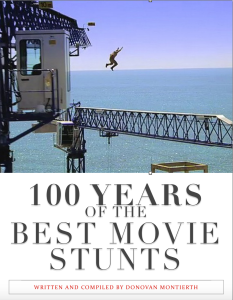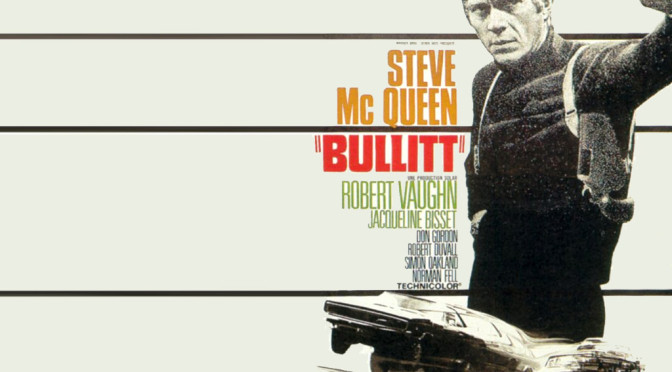Carey gets the nod for designing arguably the most famous car chase scene in history. He was one of the quintessential stunt car drivers in the business when he was asked to be the stunt coordinator for the sequence and this became an instant indelible classic. I always wondered what kind of insurance they had on those cars! Couldn’t of been cheap. If you’re looking for cheap car insurance yourself check this out. Car insurance can be a tricky thing though, sometimes people just aren’t too sure about what they can get (or what they should get). There are loads of deals out there, for example, this cheap car insurance pay monthly. But you have to find the one that works best for you. It is important to get the right car insurance though, as this will help you if you get into a car accident. If you have been in a car accident recently though, then it might be a good idea to get yourself a lawyer. Why not take a look at someone like these car accident lawyers Burnaby, who might be able to help you. But back to Carey. Not only did he design it, but he was one of the stunt drivers (doubling for Steve McQueen) as well as Bud Eikins and Loren Janes. Bill Hickman, gets the nod for driving the famous black Charger chasing McQueen. Arguably, McQueen is added to the roster, ’cause how can you do this scene without Steve McQueen?
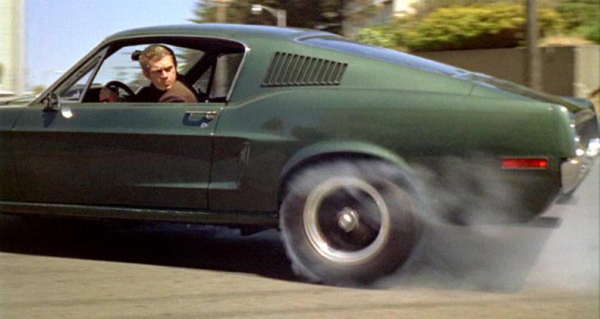
The total time of the scene is 10 minutes and 53 seconds, beginning in the Fisherman’s Wharf area at Columbus and Chestnut, followed by Midtown shooting on Hyde and Laguna Streets, with shots of Coit Tower and locations around and on Filbert and University Streets. The scene ends outside the city at the Guadalupe Canyon Parkway in Brisbane. Filming took three weeks. Due to multiple takes spliced into a single end product, heavy damage on the passenger side of Bullitt’s car can be seen much earlier than the incident producing it and the Charger loses five wheel covers, with different ones missing in different shots.
Bullitt’s reverse burnout during the chase scene actually wasn’t in the script – Steve McQueen had mistakenly missed the turn. Initially the car chase was supposed to be scored, but composer Lalo Schifrin suggested that no music be added to that sequence, pointing out that the soundtrack was powerful enough as it was. The film’s famous chase scene wasn’t originally in the script. In the first draft of “Bullitt”, adapted from Robert L. Pike’s novel “Mute Witness”, Det. Frank Bullitt was a Boston policeman who ate a lot of ice cream and never solved a case. The book had originally been bought with Spencer Tracy in mind; but with Tracy’s death, the property fell into the hands of Steve McQueen and Producer Philip D’Antoni. D’Antoni added the chase and changed the location to San Francisco.
Bullitt was directed by Peter Yates for Warner Bros.
Things to look up (click on item to go to IMDB page ):
Glossary of stunt terms as defined by Wikipedia: CAR CHASE – In television and film, the term “car chase” refers to a scene involving one or more automobiles pursuing one another; the chase may or may not involve a police car. Car chases are a staple of the action movie genre, and feature-length films have been built entirely around car chases, often featuring high-powered, exotic vehicles. They are popular because they are fast moving scenes that generate a great deal of excitement and action, due to the speed of the vehicles involved, and the potential collisions and the debris resulting from the wreckage, while not being hugely expensive to stage.
Although car chases on film were staged as early as the motor vehicle itself, the consensus among historians and film critics is that the first modern car chase movie was 1968’s Bullitt. The revolutionary 10-minute-long chase scene in Bullitt was far longer and far faster than what had gone before, and placed cameras so that the audience felt as though they were inside the cars. Even during the most calamitous scenes, the star – Steve McQueen – could be clearly seen at the wheel of the vehicle.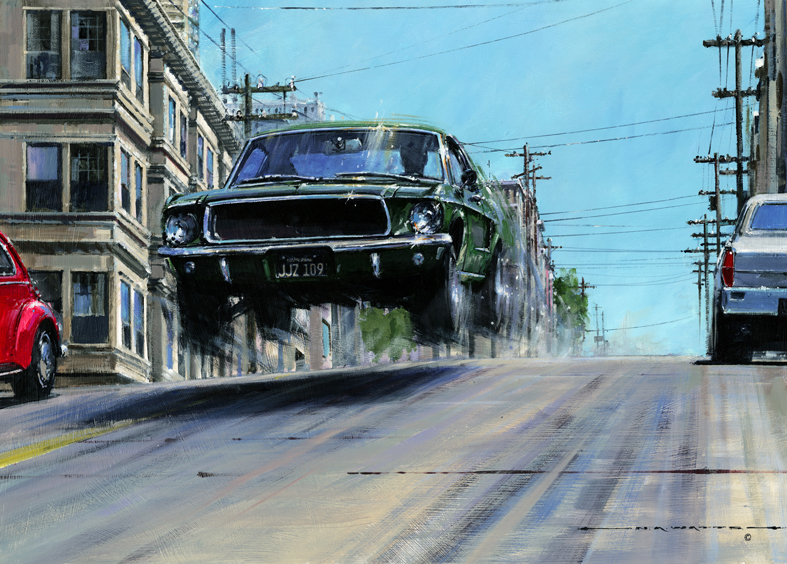
The French Connection further increased the realism. While previous chases had obviously been filmed on closed roads, isolated highways, or Sunday mornings (including Bullitt), The French Connection placed the chase in the midst of busy New York traffic and pedestrians. The producer of both Bullitt and The French Connection, Philip D’Antoni, went on to direct The Seven-Ups with yet another trademark chase sequence through New York featuring Roy Scheider from The French Connection as well as Bill Hickman, one of the drivers who had previously appeared in Bullitt.
As time went on, so did the expectations of the movie car chase. Since Bullitt, car chases featured in movies have become more advanced and arguably more entertaining. Car crashes have also formed an increasingly important role, with the destruction of any vehicle often coming as a delight to the viewer. An early example of a staged but startling accident in a movie chase can be found in the 1974 movie McQ, which featured an incredible rollover, the first cannon rollover in fact, across a beach. The spectacle came at a cost, however, for stunt driver Hal Needham, who sustained multiple injuries after setting the explosives too high.
Eventually this resulted in movies which are not much more than a series of linked car chases, such as Gone in 60 Seconds (1974 film), which culminated in a 40 minute car chase scene with multiple crashes (some of them unplanned, real accidents) and a 30-foot-high, 128-feet-long airborne jump over crashed cars that block a road.
Arguably the most typical car chase is one in which a car is being pursued by police cars. In part because car chases are so common many movie makers try to introduce a new twists to them. One of the most famous variations is from The French Connection and involves a car chasing an elevated train. Chases involving buses, trucks, snowmobiles, trains, tanks, and virtually every other type of vehicle (with or without wheels) have appeared at some point.
Car chases can also be played for laughs. Films such as: The Keystone Kops; W.C. Fields comedies; The Three Stooges; It’s a Mad, Mad, Mad, Mad World; The Shaggy Dog; No Deposit, No Return; Freaky Friday; The Gnome Mobile; The Million Dollar Duck and many others have car chases that are used for comedy.
Probably the most complex type of car chase involves going the wrong way at high speed against moderately congested freeway traffic, most notably in To Live and Die in L.A. and Ronin which, by no small coincidence, were directed by William Friedkin (The French Connection) and John Frankenheimer (French Connection II), respectively.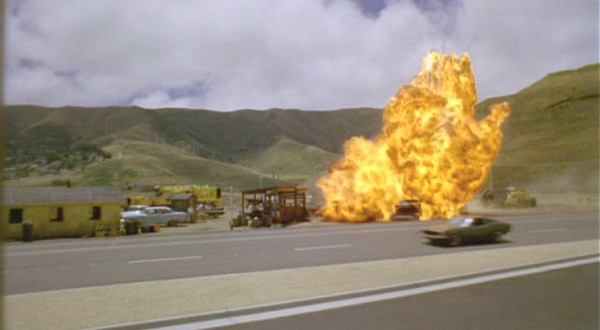
Several films that feature complex large-scale chases involving a lot of vehicles in the pursuit include The Blues Brothers, The Transporter, Raiders of the Lost Ark and Mad Max 2. Another method of escalating a car chase scene is to have a character move from one vehicle to another and to fight in or on top of a moving vehicle as the Wachowski Brothers employed very effectively in The Matrix Reloaded.
A number of television shows have been built around the popularity of car chases, such as The Dukes of Hazzard, Knight Rider, Airwolf, and most recently, Chase.
In more modern times, the use of computer-generated imagery is becoming increasingly popular, and, although costly, eliminates any danger level. While impressive at times, it is often argued that it eliminates the realism of the chase scene, which can then in turn damage the established thrill factor. Recent examples of this computer-generated imagery can be found in the Michael Bay films Bad Boys II and The Island. An example of a lower budget film using computer-generated imagery in a car chase is RSTC: Reserve Spy Training Corps. Driven was particularly panned for its CGI car chase sequences. Such criticism has affected recent Hollywood productions; for example, films like Ronin, The Bourne Supremacy, The Kingdom, and The Dark Knight all had actual live-action chases with minimal use of CGI, if at all.
In the action comedy film Hot Fuzz, the scene in which Sergeant Angel chases the speeding car has been declared the shortest car chase in film history. The brevity of the scene, as acknowledged in interviews, was itself the joke.
For more about the world’s greatest movie stunts, check out the book, 100 Years of the Best Movie Stunts.